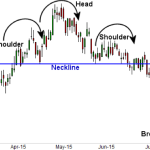By Julio Gil-Pulgar,
Due to its unprecedented growth, the economic importance of the solar energy industry is surpassing that of the fuel energy industry. The solar industry’s exponential growth has boosted solar jobs by 25 percent since 2015, the Solar Foundation reported. Concurrently, Bitcoin and the Internet of Things are becoming an even more integral element of the solar energy industry.
Solar Energy’s Massive Growth
 The fall of installation costs is one of the main factors driving the solar energy boom. One key indicator of this extraordinary growth is the number of jobs the solar industry is creating.
The fall of installation costs is one of the main factors driving the solar energy boom. One key indicator of this extraordinary growth is the number of jobs the solar industry is creating.
According to the Solar Foundation, “The Solar Jobs Census 2016 found that solar employment increased by over 51,000 workers, a 25 percent increase over 2015. Overall, the Solar Jobs Census found there were 260,077 solar workers in 2016.”
The report estimates that the industry will continue to sustain its growth, predicting that total solar employment will increase by 10 percent to 286,335 solar workers, in the next 12 months. Now, in the US, the solar energy industry has created one of every fifty new jobs. As a result, the number of solar energy industry jobs is twice as great as the number of coal jobs.
Another key indicator is the number of photovoltaic installations, which are breaking historic records in the US, particularly during Q3 2016, as shown in the chart below.
The solar energy industry growth is indeed dramatic. The Solar Energy Industries Association (SEIA) reports that “4,143 megawatts (MW) of solar PV were installed in the U.S. in the third quarter of the year, a rate of one MW every 32 minutes. That pace is even faster today, as the fourth quarter will surpass this past quarter’s historic total.”
Bitcoin, a Partner of the Solar Energy Industry
Bitcoin and the solar energy industry are increasingly intertwined. For instance, buying solar panels with bitcoins is becoming easier. Several businesses, such as gogreensolar.com, AM Solar, and Spendabit, offer complete solar panel kits and accept bitcoin as payment.
Additionally, many experts believe Bitcoin technology can help solve fundamental problems related to the energy industry, in particular distribution and trading.
Laurent Schmitt, Smart Grid Strategy Leader for GE’s Grid Solutions, says, “The problem of ‘too much’ renewable energy on a grid can be solved with blockchain, a technology most often associated with Bitcoin. Blockchain will provide a transparent way for households and businesses to trade renewables with each other.”
In this regard, an Australian startup, Power Ledger, announced on December 1, 2016, the launching of Australia’s first “blockchain-powered” residential electricity trading market. This market facilitates the sale of surplus renewable energy produced at residential and commercial developments connected to existing electricity distribution networks, or within microgrids.
“Power Ledger puts the power to manage the energy economy into the hands of consumers while maintaining the value of existing distribution networks,” claims the Power Ledger’s website.
IoT and Bitcoin Bolster Better Energy Systems

Thanks to the combined power of the Internet of Things, Bitcoin technology, and community power storage, innovative microgrid concepts are becoming a reality.
“Community storage, distributed generation, electric vehicle fleets, and coordinated load management can all be enabled by IoT, machine learning, and blockchains. We are exploring how this will make for a more efficient and clean energy system,” affirms IDEO Colab’s website.
Specifically, the blockchain-based Transactive Grid provides real-time metering of local energy production and usage and other relevant data, allowing users to trade energy on this platform openly. This project, which started in a Brooklyn neighborhood, in New York, has now attracted the interest of tech giant Siemens.
According to an LO3 Energy and Siemens joint press release: “The microgrid planned for Brooklyn, which started as a pilot project of LO3 Energy, is now being further developed with the aid of Siemens Digital Grid in the US. For the first time, a microgrid control solution from Siemens is being combined with the peer-to-peer trading platform from LO3 Energy known as Transactive Grid.”
Bitcoin technology, the IoT, and other Fourth Industrial Revolution technologies will continue fueling the growth of the solar power industry with increasing momentum, facilitating the creation of amazing solutions to generate, distribute, and trade solar and other renewable energy sources.











